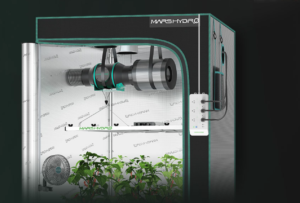Singapore’s Upcycling Revolution: Policy Meets Street Action

The Battle for a Nation’s Soul, One Discarded Object at a Time
Advanced Recycling has become Singapore’s answer to an existential crisis, but make no mistake, this is not some genteel environmental movement conducted in air-conditioned conference rooms. This is street-level warfare against waste, fought by communities, enabled by technology, and backed by a government that finally understands the stakes. Singapore, that gleaming city-state built on ambition and pragmatism, faces a reckoning. Its only landfill fills inexorably. Its consumption habits mirror the worst excesses of developed nations. Yet something is stirring, a circular economy taking shape through upcycling, that most democratic of environmental acts.
When Government Gets Serious
The Singapore government does not do things by half measures. When it decided waste demanded action, it brought the full force of policy to bear. The Zero Waste Masterplan, launched in 2019, set audacious targets. The Extended Producer Responsibility scheme forced companies to account for their packaging. The Resource Sustainability Act made waste segregation mandatory for large premises.
But here is what matters: these were not toothless recommendations. They carried enforcement mechanisms, reporting requirements, financial consequences. This is how Singapore operates. It identifies a problem, designs a solution, then implements with efficiency that would make other nations weep with envy.
The policies created space for upcycling to flourish. They made waste management expensive enough that alternatives became economically viable. They generated data on waste streams, helping upcyclers identify opportunities. They signalled governmental seriousness, attracting investment and innovation.
Singapore’s Advanced Recycling sector benefited directly from this policy framework, receiving support for infrastructure, research partnerships, and pilot programmes that would have died on the vine in less determined nations.
The Community Fights Back
Yet policy alone achieves nothing without people willing to do the work. Singapore’s upcycling community emerged from unexpected quarters: artists tired of consumer culture’s spiritual emptiness, migrants bringing repair traditions from home countries, young people radicalised by climate awareness, and retirees seeking purpose beyond leisure.
These groups established repair cafes where neighbours fix broken appliances together. They organised swap meets where goods find new owners. They created maker spaces where scrap materials become furniture, fashion, and functional objects. This is democracy in action, citizens taking responsibility rather than waiting for solutions from above.
The community initiatives include:
- Repair Kopitiam sessions teaching electronics and appliance repair skills
- The Fashion Pulpit transforming textile waste into wearable art
- Sustainable Living Lab providing tools and space for upcycling projects
- Community gardens incorporating upcycled containers and structures
- School programmes teaching children to see waste as resource
These are not hobby groups. They represent a fundamental challenge to Singapore’s consumption model, asking uncomfortable questions about growth, waste, and what constitutes the good life.
Technology as Enabler
Singapore loves technology the way some nations love football. It was inevitable that tech would infiltrate upcycling. Mobile apps now connect people with unwanted items to those who need them. Online platforms match makers with materials. Digital fabrication tools, 3D printers and laser cutters, enable precise work with reclaimed materials.
Artificial intelligence sorts waste more accurately than human workers. Blockchain tracks material provenance, assuring buyers of upcycled goods about origins and authenticity. Augmented reality apps show how discarded objects might be transformed before physical work begins.
This technological infrastructure makes upcycling scalable. What once required serendipitous encounters between materials and makers now operates with market efficiency. Advanced Recycling benefits from these same technologies, using them to optimise collection, sorting, and processing.
The Economic Equation Shifts
Money talks, even in environmental movements. Singapore’s upcycling sector generates real revenue. Furniture makers command premium prices for pieces crafted from reclaimed wood and metal. Fashion designers sell upcycled clothing in boutiques alongside conventional goods. Artists receive commissions for installations built from waste.
The economics work because Singapore’s consumers increasingly value sustainability narratives. They want products with stories, objects that represent values beyond mere function. Upcycled goods deliver this in ways mass production cannot.
Moreover, the cost equation favours upcycling as virgin material prices rise and waste disposal becomes expensive. The financial logic that once made disposal cheap and manufacturing cheaper has inverted. Smart businesses recognise this shift.
Singapore’s Advanced Recycling programmes have demonstrated how economic and environmental interests align when policy creates the right incentives.
The Challenges Nobody Mentions
But let us be honest about obstacles. Upcycling cannot replace industrial recycling for most materials. It operates at small scale, labour-intensive and difficult to standardise. Quality control proves challenging when working with variable inputs. Safety concerns arise with certain waste types.
Furthermore, upcycling can become another form of consumption, purchasing upcycled goods to signal virtue rather than genuinely reducing consumption. The Instagram-friendly aesthetic of some upcycled products risks turning environmental action into lifestyle branding.
These are real problems demanding honest discussion rather than cheerleading.
What Victory Looks Like
Singapore’s circular economy will not emerge from any single approach. It requires industrial Advanced Recycling for bulk materials, community upcycling for creating value and engagement, policy frameworks that make waste expensive and reuse profitable, and technological systems that connect all participants efficiently.
The country possesses advantages: small size enabling coordination, wealthy population able to pay premiums for upcycled goods, governmental capacity for rapid policy implementation, and technological sophistication to build enabling infrastructure.
Whether these advantages translate to genuine transformation remains uncertain. But the fight has been joined. Communities organise, policies tighten, technologies deploy, and slowly, grudgingly, consumption patterns shift. This is how revolutions happen, not through single dramatic moments but through accumulated small victories that eventually achieve critical mass and fundamentally alter how a society operates, particularly when supported by the infrastructure and commitment that Advanced Recycling represents.





